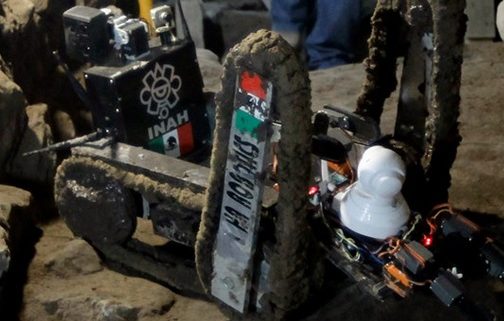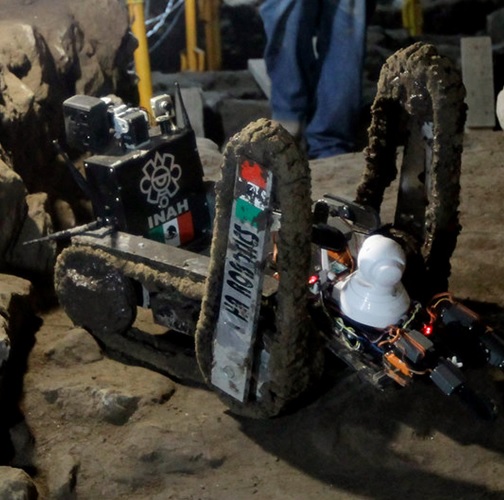AMREL is always on the lookout for new applications for Unmanned Ground Vehicles (UGV), since we are the premier supplier of Operator Control Units for them. Bomb detection, guard duty, and farming are well-known uses for UGVs. To this list, we can add unlocking the secrets of a lost civilization.
For over 100 years, archeologists have been exploring the ruins of Teotihuacan, a location outside of Mexico City. Famous for its huge pyramids, it once housed 100,000 to 200,000 people, making it one of the largest cities in the world at that time. Almost nothing is known about the original inhabitants or why they inexplicably disappeared.
After a heavy rainstorm, Sergio Gomez, an archeologist who has devoted his career to studying the Teotihuacan ruins, noticed a sinkhole at the base of one of the pyramids. In best Indiana Jones fashion, he lowered himself by rope into the mysterious hole. No word about whether he wore a fedora or carried a whip. Nor were there any reports of snakes or giant rolling stone balls.
He descended approximately 45 feet into the dark, unknown, never-explored opening. Was he scared? According to him, he was terrified. However, at the end of descent, he discovered something that made the trip worthwhile; a man-made tunnel. Around 100 yards long, this underground passage eventually yielded 75,000 artifacts including seashells, animal bones, jewelry, pottery, rubber balls, obsidian knives, and green stone statuettes.
Excavation of the final end of the tunnel was critical. Located deep beneath the Temple of the Plumed Serpent, it was thought to hold vital information about the purpose of the tunnel, as well as pyramids themselves.
However, the tunnel narrowed significantly toward the end; no person could crawl through it. Using traditional mining techniques were out of the question, since they were too likely to damage the sensitive archaeological site.
Fortunately a university in Mexico City had a solution. Named for Aztec rain gods, Tlaloque and Tláloc II were two UGVs that had previously been used to explore Teotihuacan. A similar UGV had been used in an Egyptian tomb.
A 4×4 traction vehicle, Tlaloque 1 is only 20 cm in height, 30 cm wide, and 50 cm long. Located one at the back and one at the front, Its 2 remote-controlled camcorders can do 360 degree turns. It has its own lights and transmits images to an external computer monitor.
The larger meter-length Tláloc II is equipped with heavy duty tires, designed to navigate wet, muddy soil. Its meter-length mechanical arms, can chew through earth and clear obstacles. Equipped with bright lights as well as video cameras, it stores images on an on-board hard drive. It uses a laser to scan the topography. Unlike Tlaloque 1, Tláloc II is remote controlled by wireless means and carries an independent “insect” robot that has an infrared camera. Both the Tláloc II and the “insect” robot can be seen in the video at the end of this post.
Tláloc II and Tlaloque successfully transversed the 2,000 year old tunnel. Much to the archaeologists’ surprise, the UGVs didn’t discover a tomb at the end of the passageway, but instead a spacious cross-shaped chamber, with more jewelry and several statues. The purpose of the chambers is still being determined.
Although UGVs have been used before on archaeological digs, this is the first time robots have been instrumental in a major archaeological discovery. I suspect it won’t be the last.






